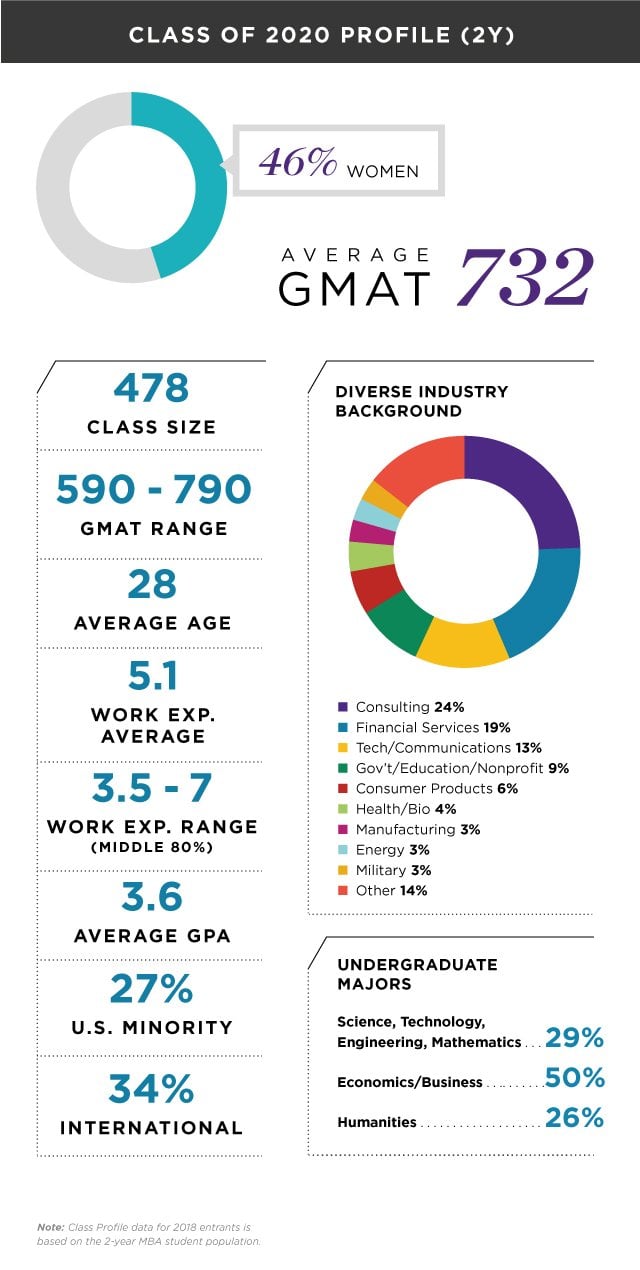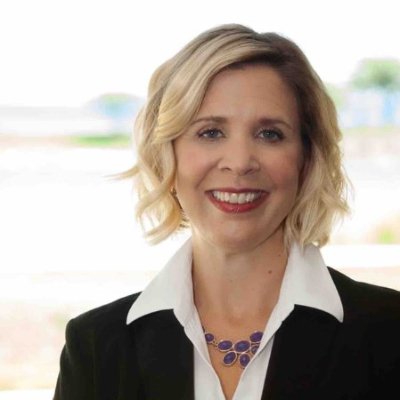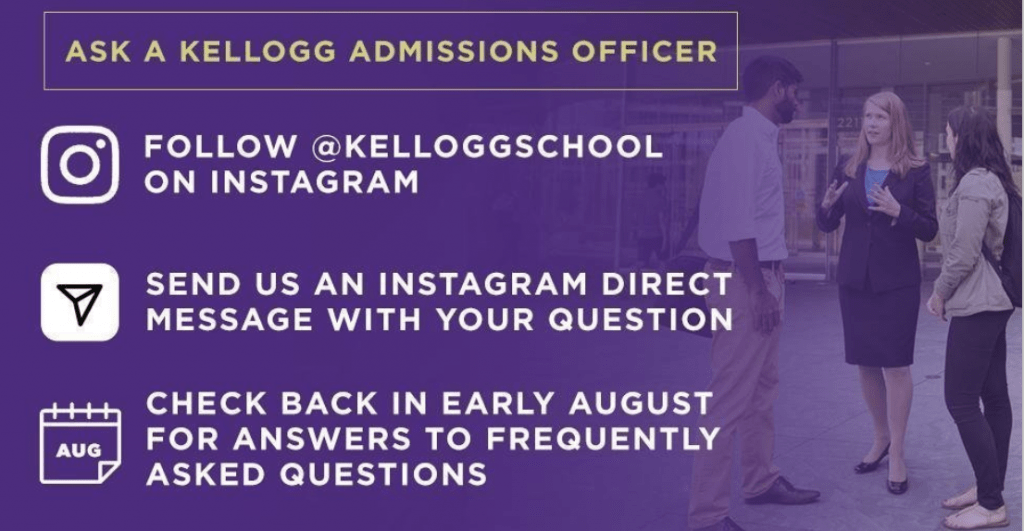Just How Did USC Marshall’s MBA Program Attain Long-Elusive Gender Parity?

This fall, USC Marshall became the first top-tier MBA program to reach gender parity. The incoming full-time MBA Class of 2020 has as many women as men—actually a few more—52 percent. This notable achievement is a massive 20-point percentage leap from last year when women made up just 32 percent of the incoming class.
“We are proud to achieve this distinction,” Dean James G. Ellis said in a press release. “Our ongoing focus on diversity and inclusion is playing out in real numbers now. This is only the start.”
Gender Parity in Business School
While many other top schools have been working to reach gender parity over the last few years, they’ve thus far fallen short of the 50-50 mark. According to a 2017 report by the Forté Foundation and the Graduate Management Admission Council (GMAC), the average enrollment of women in full-time MBA programs at 36 business schools is 37.8 percent. That’s an improvement of less than one percent from 2016, when it was 37.1 percent, and only a few percentage points up from 2013, when it was 34 percent.
Several other leading schools have hovered in the low 40s in recent years—including Michigan Ross (43 percent), Yale School of Management (43 percent), Dartmouth Tuck (44 percent), and the University of Pennsylvania’s Wharton School (44 percent). And Northwestern’s Kellogg School of Management recently announced that its incoming Class of 2020 is 46 percent women, a record for the school. These figures all make USC Marshall’s achievement even more impressive, though it’s also a statement on women in business.
In general, women earn 60 percent of graduate degrees and fill up more than 50 percent of graduate classes, even those in male-dominated professions such as law and medicine. MBA programs, though, have lagged stubbornly behind, which many believe to be the result of a combination of factors. Some of these include the timing of business school, which is later than law or medical school because of the required prior work experience; the return on investment, and the fact that men with an MBA out-earn their female counterparts throughout their careers.
Still, there have been strides forward. Just five years ago, only three of the top 25 schools enrolled more than 40 percent women in their MBA programs. Last year, nearly half had reached that mark. Some schools have yet to release class profile information for the current incoming class, so it remains to be seen how this year compares to last. Regardless, USC Marshall reaching the 50-percent mark is a standout achievement, particularly since it hadn’t even broken 40 percent before this year.
“I’m super thankful and proud to be here at this particular point in time,” Gabriela Omenn (2020) said. “One of my key interests beyond business school is to elevate women and get them into positions of power, so it’s directly aligned with where I want to go in my career. It feels really amazing to be among such a high class of students, and I believe it’s going to be something that pays off in dividends after school is done.”
USC Marshall MBA Class of 2020, More Than Half Women
To get an idea about how USC Marshall became the first top business school to break through the gender parity barrier, we talked to Evan Bouffides, assistant dean and director of MBA admissions.
-
Recruiting Efforts Were Strong
According to Bouffides, this past year was a solid one for recruiting at USC Marshall across the board, with improved outreach to all prospective applicants, women included. But Marshall did place a concerted effort on reaching women applicants specifically, he said. These targeted outreach efforts included participation in Forté Foundation events (Marshall is a Forté member school), programming for women as part of on-campus visits, and online marketing campaigns.

Evan Bouffides, USC Marshall Assistant Dean and Director of MBA Admissions / Photo via USC Marshall
“We’ve been a bit more deliberate and certainly more comprehensive in the way we send messaging out about our program, about the admissions process, and about the university,” explained Bouffides. “ In general, I feel that we touched a lot more people via electronic communication than we have in the past.” In particular, the school increased its follow-up communication with candidates who attended various events.
Bouffides also thought January’s Women’s Week recruiting event was the best one yet. More than 100 women visited campus for this one-day event to learn about the school, meet other applicants, and get a taste of what it’s like to be a USC Marshall MBA student.
“Not only did we have a larger group than in the past, but we also, hopefully, presented a better case for ourselves than we had in the past,” said Bouffides. “Our students also did a great job contributing to the decision-making process in a tangible way.”
Current students play a big role in recruiting efforts for prospective applicants at USC Marshall. Both Marshall’s ambassador students, who work directly with admissions, and student members of its Graduate Women in Business club, reached out personally to candidates and admits as part of the admissions process to share their unique student perspectives. Many of these students also helped organize some of the recruiting events for prospective applicants.
“We also have a follow-up program, where once a person is admitted, we put them in touch with a lot of different groups, students being the preeminent group,” Bouffides explained. “The students did a great job answering questions and convincing people to join us.”
-
Improved Rankings and Reputation
Out of the many factors that may have contributed to USC Marshall reaching gender parity this year, the school’s improved rankings and reputation had a distinctly positive effect. Marshall jumped four places to 20th in the latest U.S. News ranking of leading MBA programs. And the Financial Times ranked Marshall as one of the best business schools for women to pursue an MBA (20th in the world and 12th in the United States).
“Our rise in rankings and the good press we’ve had over the last year or two has helped make us more attractive to candidates,” said Bouffides. “This, along with our other efforts, helped bring the entire class together.”
-
A Great Yield
Another factor that contributed to USC Marshall’s gender parity was this year’s impressive yield—the percentage of admitted students who ultimately enroll. It was a significant change from last year’s class, when less than a third of admitted female students (31.3 percent) chose to enroll. This year, 40.1 percent of admitted females entered the full-time MBA program. This meant that more of the students USC Marshall wanted actually attended, resulting in the highest-quality class on record.
The average GMAT score for the Class of 2020 is 705, up from 703 last year, and the average GPA is 3.5 compared to 3.48. This year’s incoming class also includes a record number of underrepresented minorities—21 percent of domestic students, compared to 16 percent previously.
“This year’s applicant pool was the strongest in our program’s history,” said Bouffides. “They brought the highest average GMAT score and the highest average GPA. The women, in particular, were extraordinarily well prepared.”
USC Marshall in the Future
So, where does USC Marshall go from here? We asked Bouffides if the school hopes to reach the same levels in coming years, but he said there is no prescribed quota for women in future classes. The goal is always just to bring in the most robust possible class, and diversity is a big part of that—gender parity being just one aspect.
“First, let me explain that we didn’t go into the admissions cycle this year stating that gender parity was our goal. We never do that for any particular metric when it comes to admissions,” said Bouffides. “We didn’t go into the season with parity as a goal, but it was an outcome of the fact that we had a large and talented group of women applying to the program. My hope is that now that we’ve hit this mark, it will be easier going forward, and hopefully, we’ll be even that much more attractive to women and men as well as they think about schools to which they may apply.”
As for Omenn, she sees USC Marshall as a model for the future where diverse backgrounds represented by different genders and groups can come together to share their ideas and perspectives—elevating discussions for a richer experience.
“Gender parity is a good model for future applicants, not just at USC but at any business school,” said Omenn. “In years to come, applicants will be able to see more of themselves in business school, which will hopefully inspire them to keep striving for their goals.”
This article has been edited and republished with permissions from our sister site, Clear Admit.
Northwestern Kellogg MBA Class of 2020: 46 Percent Women, 27 Percent U.S. Minorities

Northwestern University’s Kellogg School of Management announced today that women will make up 46 percent of the incoming two-year, full-time MBA Class of 2020. That’s a four-percentage point jump over last year and a record high for the school. U.S. minorities are also up—comprising 27 percent of this year’s first-year students, as compared to 25 percent last year. Meanwhile, average GMAT (732) and GPA (3.6) were identical to last year. Class size also remained constant at 478.
“I am very, very thrilled with the diversity of the class,” Melissa Rapp, Kellogg Director of Admissions for full-time MBA and MSMS programs, told Clear Admit. “And not just because of the percentages but also the quality of candidates across the board,” she said. International students will make up 34 percent of the incoming class, drawn from 46 countries around the globe, a modest one-percentage point decline amid soft overall international applicant volume to U.S. schools.
Rapp pledged that she and her team will keep striving to attract the most diverse classes possible. “I firmly believe that diversity in the classroom leads to better learning and a more impactful experience for every student who is here,” she said.

Steady State Elsewhere Is Great
For the past six years Kellogg’s average GMAT score has been on the rise, climbing from 708 in 2012 to 732 last year. Rapp said she is not at all concerned to have it remain static at 732 this year. “That our average GMAT and GPA have stayed the same shows that we continue to attract a really outstanding pool of applicants year after year,” she said.
Average undergraduate GPA also didn’t budge—coming in at 3.6 for now the third year running. As for what applicants studied while in college, 50 percent of this year’s incoming class majored in business or economics, up from 49 percent last year and 45 percent the year before that. STEM majors fell slightly to 29 percent, down from 30 percent the year before. Humanities majors both this year and last made up the remaining 26 percent.
Varied Professional Experience
In terms of pre-MBA work experience, approximately one in four incoming Kellogg students—24 percent—come from consulting, down from 27 percent last year. Another 19 percent come from the financial services industry, also a slight decrease from last year’s 20 percent.
Up this year? Students who have worked in tech/communications grew from 12 to 13 percent. “I think the changes that we see in our class really reflect the changes that we see in the business world,” Rapp said. “There are more people from tech, which is not surprising for anyone since there is more tech in the world than there ever has been.” Students with government/education/nonprofit experience also increased, from 7 to 9 percent.
Overall Rapp is pleased to see Kellogg continuing to attract a wide range of students from across functions and industries. “The variety continues to be very strong both in terms of our incoming students and our outgoing graduates,” she added. “Again, those differences and that diversity is what makes the Kellogg experience so strong.”
Kellogg’s Efforts to Support Women May Off
By far the biggest news today is that Kellogg has come closer than ever before to gender parity with its newest incoming class. USC Marshall School of Business made headlines last month by becoming the first leading business school to cross the 50/50 mark—women will make up 52 percent of the Marshall Class of 2020, a staggering 20-percentage-point jump over last year. At UT Austin’s McCombs School, which has also shared a preliminary Class of 2020 profile, the percentage of women slipped year over year, from 40 to 38 percent. And at Cornell’s Johnson Graduate School of Management, which welcomed it new Class of 2020 students to campus last week, women make up 33 percent, a five-point gain over last year.
“It’s really pretty exciting,” said Rapp of Kellogg’s 46 percent women. She credits the gains in female enrollment in part to the vision and leadership of outgoing Kellogg Dean Sally Blount, who served as dean from 2010 until she stepped this past spring.
Kellogg has also called on its current female students, including members of the Kellogg’s student-led Women’s Business Association (WBA), to take part in admissions outreach activities in hopes that they can forge meaningful connections with prospective female candidates early in their exploration process.

Melissa Rapp, Kellogg Director of Admissions for the full-time MBA and MSMS programs.
New this year, the school also convened its inaugural Global Women’s Summit in May. More than 1,200 women participated “live”—with 800 at Kellogg’s Global Hub in Evanston and the rest via extension events in London, Hong Kong, New York, Boston, San Francisco, Miami, Seattle, and Chicago hosted by companies including Amazon, Microsoft, and Starbucks. Over the course of the two-day event, the #KelloggWomen hashtag was trending in Chicago and generated 2.7 million overall impressions. “The breadth of engagement the summit allowed for provided a really nice bridge from prospectives to current students to our alumnae population,” Rapp said.
Kellogg also this year hosted its third-annual Women’s Leadership Seminar, a unique five-week lineup for second-year MBA students combining lectures, workshops, networking events, and alumni panels on recruiting issues women face. “The goal is to ensure that our high-potential women are equipped to pursue and navigate careers that have deep personal and professional meaning,” Rapp said.
“This combination of everything from lunch and learns to seminars to summits really helps the women here know that Kellogg understands the unique situation they are in and the challenges they will face on their journey to become impactful leaders and is proactively talking about that and helping them navigate that.”
Those Kellogg women, it seems, have been doing a good job of helping prospective female applicants see Kellogg as a place they want to be, too.
This article has been edited and republished with permissions from our sister site, Clear Admit.
Day-To-Day Creativity, and More – Chicago MBA News

Let’s explore some of the most interesting stories that have emerged from Chicago business schools this week.
Putting Creativity to Work – Chicago Booth Magazine
Chicago Booth recently published an article about how entrepreneurs and employees alike create opportunities for creative thinking.
Bay Area online video startup Darby Smart’s Nicole Farb (’09) suggests setting aside “open blocks of time for less structured thinking while brainstorming initial ideas.” She adds, “In my own life, creativity is a journey. I’m often doing it for the process, not the outcome.” She also advocates that part of embracing creativity is “failing fast.”
U.S. Postal Service Marketing and Client Relationship Manager Mauresa Pittman (’10) writes of the challenge involved in distilling the creative process to just a stamp. She writes, “The creative challenge became, how do we sum up one of the most prominent American artists of the 20th century in a pane of 12 stamps. [We also] need to consider how this message could land with different audiences and ask ourselves if we are being mindful of the diverse viewpoints.”
Ted Wright (’00), founder of Atlanta-based word-of-mouth marketing agency Fizz, believes creativity is the result of “data plus will.” He adds, “We start by asking a lot of questions about your company. For us, creativity starts with what the story is that you are trying to communicate to people.”
You can check out the full article here.
Business Students Learn the Meaning of ‘Moralogy’ During Summer Program in Japan – Mendoza Ideas & News
The Notre Dame University Mendoza Business and Culture in Japan course introduced “undergrads to Japan’s cultural and business traditions during four campus class sessions and two weeks on-site in Tokyo.”
Mendoza Associate Teaching Professor of Management & Organization and Liu Institute for Asia and Asian Studies faculty fellow Jessica McManus Warnell led the 17-member cohort on the trip to understand Japan’s “moralogical” approach to business, which “presents the idea that business can foster a virtue ethic that then makes business better for all stakeholders—customers and clients, employees, managers, and society.”
She writes, “What we were hearing from the companies we visited [in Japan] was that successful business is more about societal impact and employee engagement and customer satisfaction.”
You can read more from the article here.
What Will It Take to Get More Women on Boards? – Kellogg Insight
Northwestern Kellogg surveyed the gender gap that exists within many company boards—19.9 percent of S&P 500 company directors and 14.7 globally—and how to build more momentum to get more women to serve on boards.
The article’s first point involves the consideration of women who happen to be senior VPs or C-level positions other than CEO when companies want to add a female director. “Applying the same qualifying criteria to both male and female directors would increase the pool of executive women who bring talent, experience, and a diverse perspective to board service.”
The article notes that a major part of being considered as a board director involves “honing a value proposition,” which Kellogg’s Women’s Director Development Program has helped almost 800 women understand in order to be better prepared for board opportunities.
The article singles out a story from one high-level executive whose phone did not ring despite “vast experience, incredible skills, and a huge network.”
“When nothing happened, she realized she needed to reach out strategically to an even broader range of people to communicate the value she could bring to particular types of boards and seek their advice. She ultimately secured a seat not only on the board of one company she admired, but a number of others as well.”
Read the rest of the article here.
Kellogg Launches ‘Ask an Admissions Officer’ Initiative on Social Media

Are you curious about the Northwestern University Kellogg admissions process? Do you want to know if it’s better to apply in one round or another, what the committee is looking for, or how you can apply to more than one program at a time? Kellogg’s new social media initiative, “Ask an Admissions Officer,” offers answers to these burning questions and more.
“Simply put, we are giving people an opportunity to send us questions via Instagram direct message (DM),” explains Kellogg Communication Specialist Rebecca Rogalski.
“Then, our social team is going to collect the best and most frequently asked questions, creating a short series of videos with the Kellogg admissions officers answering those questions.”
Kellogg applicants who want to submit their questions over the next week should do the following:
- Follow @KelloggSchool on Instagram.
- Send the school a question via direct message.
- Check back in early August to see if your question was answered.

This is an ideal opportunity for Kellogg hopefuls to get answers to all their burning questions before the Round 1 deadline on September 19, 2018.
Pro tip: Before you submit your question to Instagram, make sure it doesn’t have an answer that can be easily found on the Kellogg website. We suggest checking the Admission Facts & Tips section first if you need intel on …
- The best time to apply
- Deferrals
- Applying with a partner
- Work experience recommendations
You can also check out last year’s Clear Admit post where Kellogg’s Director of Admissions for the full-time MBA and MSMS Programs Melissa Rapp discussed application essays, female enrollment, and more.
Remember to stay tuned later this month for the Kellogg admissions team to provide video answers to the most frequently asked questions.
This article has been edited and republished with permissions from our sister site, Clear Admit.
Schulich Alum Shares His Experience, and More – Toronto News

Toronto’s business schools have seen some exciting developments from students, alumni, and faculty this week. Let’s take a look at some of the high points.
Alumni Stories: Michael Zanella – MMgt – Schulich School of Business
A Schulich School of Business alum was recently profiled on his time in the school’s new 12-month Master’s of Management program.
Michael Zanella, a 2017 graduate, who turned his education into a role with Ceridian Dayforce as an Implementation Consultant Associate. You can watch his full interview below.
Wine, Beer, Spirits Brand-Builder WX Names Michael Lukan CFO – North Bay Business Journal
Michael Lukan was recently named the official new CFO of WX Brands, a company that creates wine, beer, and spirits. Lukan, an alum of Western University Canada’s Ivey Business School, co-founded Wine Hooligans in 2013. He has also worked at Purple Wine Company and Sonoma Wine Company. With news of the Lukan’s arrival at the company, WX Brands President and CEO Peter Byck says, “His well-rounded experience and entrepreneurial mindset will make him a great asset for WX Brands to continue to build on our tremendous growth.”
Regarding his new role, Lukan says, “Peter and the WX team have positioned the company for tremendous growth by delivering an exceptional customer experience and I’m looking forward to helping realize this opportunity.”
You can read more about Lukan and WX Brands here.
What Is Less Scary in the Dark? – Scientific American
Ping Dong, a Professor at Northwestern University’s Kellogg School of Management, and Chen-Bo Zhong, Professor at the University of Toronto Rotman School of Management, recently conducted a study that examined the, “impact of visual darkness on people’s perceived risk of contagious-disease transmission.” The researchers predicted that the darkness would make people feel more separate or insulated from one another, so they would be less squeamish about the germs of those around them. In fact, the study concluded that being in a darker environment would make subjects reduce their caution when it came to unethical behavior, of which might include cheating on one’s significant other and other acts of selfishness.
Their research showed that perceived risk of contracting airborne illnesses decreased when participants were in more dimly-lit rooms, as well as when they were wearing sunglasses. “In addition,” writes Scientific American writer Cindi May, “visual darkness increased participants’ perceived distance from the confederate, and this increase in distance mediated the reduction in perceived risk of contagion in the dark. Their fear of non-contagious diseases did not depend on the lighting.”
You can read more about the duo’s research here.
Northwestern Research Finds Secret to Hot Streaks, and More – Chicago News

Let’s explore some of the most interesting stories that have emerged from Chicago business schools this week.
When You’re Hot, You’re Hot: Career Successes Come in Clusters – Kellogg Insights
In a new Nature paper, Northwestern Kellogg Associate Professor of Management and Organizations Dashun Wang and his co-horts reviewed the “career histories of thousands of scientists, artists, and film directors [and] found evidence that ‘hot-streak’ periods,” in which professionals seem to stumble upon major discoveries, “are both real and ubiquitous, with virtually everyone experiencing one at some point in their career.”
Wang, along with visiting student Lu Liu, Kellogg post-doctoral student Yang Wang, the University of Miami’s Chaoming Song, Central European University’s Roberta Sinatra, and Penn State’s Lee Giles, discovered that their findings “shed important new light on the patterns underlying success in all fields, and could be used to improve decisions about tenure, promotions, and hiring.”
You can read more about the group’s research here.
From Croatia’s World Cup Run to the Marketing Classroom – Quinlan School of Business Blog
Loyola Quinlan Clinical Professor of Marketing Katherine Sredl, who happens to be Croatian, heralded the “indescribable joy and pride” Croatians worldwide felt for the World Cup’s second-best team, due in large part to “the country’s small size and the strength of our competition.”
Professor Sredl explains that the pride she and her fellow Croatians feel for their country motivates her to “tell the stories of the people of the region, from the most to the least powerful and those in-between, women who worked in factories and are now unemployed, men who fought in the war and are now working to sustain peace.”
She adds that she hopes to serve the Bosnian, Croatian, Serbian students at Quinlan “by showing them that they can take that “Indescribable” feeling they might have—be it about the place they love or anything else — and reflect on how they can use it to “Go forth and set the world on fire,” as St. Ignatius inspired us and as we say at Loyola.”
Notre Dame IDEA Center Launches 27 Startups in First Year of Operation – Mendoza Ideas & News
The University of Notre Dame Mendoza College of Business announced that between July 2017 and June 2018, its IDEA Center launched 27 startups, 11 of which directly involve Mendoza students or alum.
The startups run the gamut industries, from health care to information technology, law, and media. The startups collectively “raised more than $4 million in investments or grants, created 83 new jobs, launched 23 products, and generated more than $500,000 in sales.”
The IDEA Center’s mission is to “build an ecosystem of high-potential startups in the South Bend-Elkhart region that grow rapidly and then attract venture capital, entrepreneurs and an increasing number of startups that create more jobs, all in a virtuous cycle of economic development.” Bryan Ritchie, Associate Provost and Vice President for Innovation, elaborates:
“The success of the IDEA Center’s strategy indicates that a strong focus on startups in the South Bend-Elkhart region will lead to the potential for significant economic growth, such as that seen in other technological hub cities in the country. In time, we believe this region will retain and attract even more of tomorrow’s brightest, most innovative minds.”
You can check out more about the IDEA Center here.
